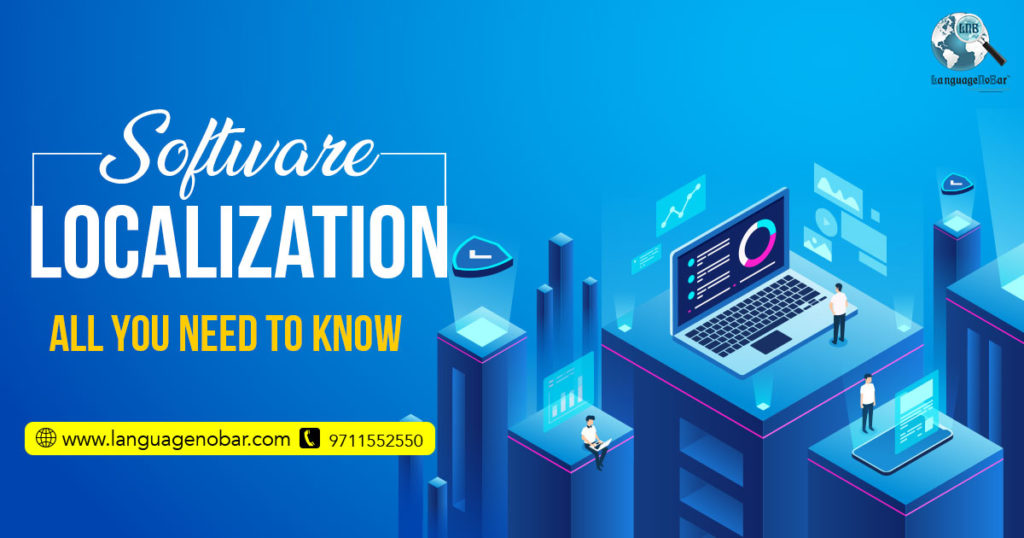All You Need to Know About Software Localization
- Software Localization
- Comments (0)
Software companies that either have an international presence or aiming to have one are required to ensure that their products offer a great experience for users in several multilingual markets. It means that their software needs to be modified to suit the different cultural, linguistic, and social requirements of the target audiences and regions of the company. In other words, if your goal is to considerably hike your user base, you cannot afford to alienate a substantial segment of your digital audience just because of language differences and exclusive expectations in terms of user experience.

Software localization is the process of translating software into different languages while keeping in mind the cultural specifications and making required technical and legal adjustments to woo users around the world. So, it’s more than just translating the text. It’s about considering the cultural and country-specific aspects of the languages, such as - verifying the right spelling and phrasing, adjusting to the proper date and time format, currency conversions and culturally appropriate graphics, and much more. Certainly, we cannot ignore the fact that software localization comes with its own set of challenges. The good news is that LanguageNoBar – the leading translation company of India has the ways to structure the localization process. Our experts design the localization process so effectively that it shortens your time to market, optimizes your expenses, and ensures a better environment for cross-team cooperation.
There are about 7.8 billion people around the world, and out of which only 1.35 billion speak English. Also, only about 360 million people speak English as their first language, which means most of the world’s English-speaking population is more comfortable working with other languages. Even in many mono-linguistic countries, some people speak other languages or are comfortable with another language. But if you are targeting a multilingual country then you have to consider software localization to succeed in the desired market.
But what are the most critical advantages of software localization? Why do businesses need to cater to it? The answer is -
The need for software localization is mainly to:
Quickly Infiltrate the New Market:
Localization helps you to enter the new market and be recognized by the users in no time by offering the product in their preferred language. Also, by incorporating localization at the development stage of the software product you can launch it in multiple markets at once. As localization gets more complex, expensive, and time–consuming at later stages, the early measures prove to be more productive and lucrative.
Grow Your Customer Base:
Localization ensures that your software becomes accessible to new customers. Also, it enables you to have higher customer retention making them repeat customers. Once your software settles in you will have a continuous revenue flow and increasing customer base by word-to-mouth and social media chatter, making you a reliable source.
Enhance User Experience:
User experience or UX is the most important part of any software or app. Localization empowers your software to conform to the cultural values and linguisticnorms of the region and people of the target market. By investing in localization, you enhance your overall UX and that can provide you ten to a hundred times return. People often go for reading reviews before downloading an app or software, a localized UX can provide you the competitive edge and make you stand out.
Now since you understand the need and benefits of software localization, let’s delve into the technicalities of doing it. Software localization involves multiple steps that can broadly be condensed under the following heads:
Platform Selection:
Selecting the right platform is of great significance for your software to function smoothly and painlessly. The right platform allows you to have the much-needed flexibility and support multi-source formats.
Extracting the Resource File:
Well, here you need to extract the resource file from your codes in of the formats supported by the platform, and after making the required adjustments upload it back.
Translation:
One of the most vital steps and components of professional software localization services is achieving the correct translation. Your translator team should be native to the target language and innate to the culture of the region. Translators will translate the source strings and get them ready for upload.
Quality Check:
Quality check is important before re-inserting your strings. It allows you to ensure the overall correctness of the translation and make adjustments if needed.
Re-insertion in code:
Once you are satisfied with the translation and the quality check reports, it’s time to re-insert the strings into the code and deploy.
Localization Testing:
Detailed Localization Testing is essential to ensure the efficient and effortless running of the software. Just as with any update, you need to test and test again to figure out the bugs and shoot them down. You can also opt for local testing where you can receive feedback from the local people about the localization and UX of the software.
Does software localization seem a bit more technical and hectic to you than expected? Well, to date the best way to localize your software is to hire a professional. LanguageNoBar is well-equipped with tactical gear and technical knowledge and experience to take the pain out of the process. With premium ISO certifications, LanguageNoBar is a customer oriented company with a well defined localization quality process.
Related Blogs
-
How to pick the
best-fit translation company for your localization needs
Mobile App
Localization-The Linguistic Advantage!
Tips for
accurate mobile app localization






